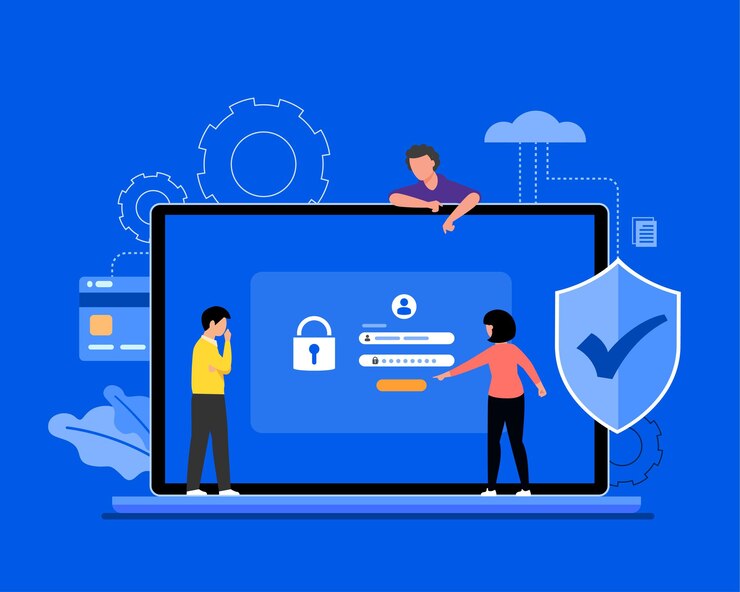Securing sensitive information and maintaining the integrity of online transactions are critical concerns for organizations. One effective method to enhance security is to implement risk-based authentication. This advanced security measure strengthens data protection and improves the overall user experience. This post will explore the benefits of adopting risk-based authentication in your organization.
Understanding Risk-Based Authentication
Risk-based authentication (RBA) is a dynamic security measure that assesses the risk level of a login attempt in real time. Unlike traditional static authentication methods, RBA evaluates user behavior, device information, location, and transaction type to determine the risk associated with a login attempt. Based on this risk assessment, the system can prompt additional verification steps if the risk is high, ensuring only legitimate users gain access.
Enhanced Security
- Adaptive Authentication: RBA adapts to the risk level of each login attempt, providing a higher level of security. For instance, if an employee tries to log in from an unfamiliar location or device, the system can require additional verification, such as a one-time password (OTP) or biometric authentication.
- Reduced Risk of Unauthorized Access: RBA minimizes the chances of unauthorized access by evaluating multiple risk factors. This is particularly crucial for organizations handling sensitive data or financial transactions, where a single breach can lead to significant losses.
- Protection Against Sophisticated Attacks: Cyber attackers continuously evolve their tactics. RBA’s real-time risk assessment makes it harder for attackers to bypass security measures, as they must accurately mimic the legitimate user’s behavior and context.
Improved User Experience
- Seamless Login Process: One of the significant advantages of risk-based authentication is it provides a seamless login experience for legitimate users. Low-risk login attempts can proceed without additional verification, reducing friction and enhancing user satisfaction.
- Contextual Authentication: RBA ensures users only face additional verification steps when necessary. This contextual approach balances security and usability, ensuring users are not unnecessarily burdened with multiple authentication steps.
- Increased User Trust: When users know their organization employs advanced security measures like RBA, they increase their trust and confidence in its ability to protect their data and transactions.
Cost Efficiency
- Reduction in Fraud Costs: Implementing RBA can significantly reduce fraud-related costs by preventing unauthorized access and fraudulent transactions. This is especially important for organizations that handle gateway payment online systems, where the financial stakes are high.
- Decreased Need for Manual Review: RBA automates the risk assessment process, reducing the need for manual intervention. This automation lowers operational costs and allows security teams to focus on more complex threats.
- Efficient Resource Allocation: By dynamically adjusting the level of authentication required based on risk, organizations can allocate resources more efficiently. High-risk scenarios can be given priority, ensuring security measures are proportionate to the threat level.
Compliance with Regulations
- Adherence to Industry Standards: Many industries have stringent security requirements and regulations. Implementing RBA helps organizations comply with these standards, demonstrating their commitment to protecting sensitive information.
- Audit Trail and Reporting: RBA systems often include comprehensive logging and reporting features. These capabilities provide an audit trail of authentication attempts, helping organizations meet regulatory requirements and providing valuable insights into security practices.
- Enhanced Data Protection: Compliance with regulations often requires robust data protection measures. RBA enhances data protection by ensuring only authorized users can access sensitive information, supporting compliance efforts.
Scalability and Flexibility
- Scalable Security Solution: As organizations grow, their security needs become more complex. RBA is a scalable solution that can adapt to increasing user numbers and diverse authentication requirements.
- Customizable Policies: RBA systems allow organizations to customize risk assessment policies based on their unique needs. This flexibility ensures the authentication process aligns with the organization’s security goals and risk tolerance.
- Integration with Existing Systems: RBA can be integrated with various authentication mechanisms and security systems, including gateway payment online platforms. This integration enhances overall security without disrupting existing workflows.
Conclusion
Implementing risk-based authentication in your organization offers numerous benefits, from enhanced security and improved user experience to cost efficiency and regulatory compliance. By dynamically assessing the risk associated with each login attempt, RBA ensures only legitimate users gain access while minimizing friction for low-risk scenarios. As cyber threats evolve, adopting advanced security measures like RBA is essential for protecting sensitive information and maintaining users’ trust. Organizations handling gateway payment online systems, in particular, can significantly benefit from the robust security and cost savings that RBA provides. Embrace risk-based authentication to safeguard your organization’s digital assets and enhance overall security posture.










